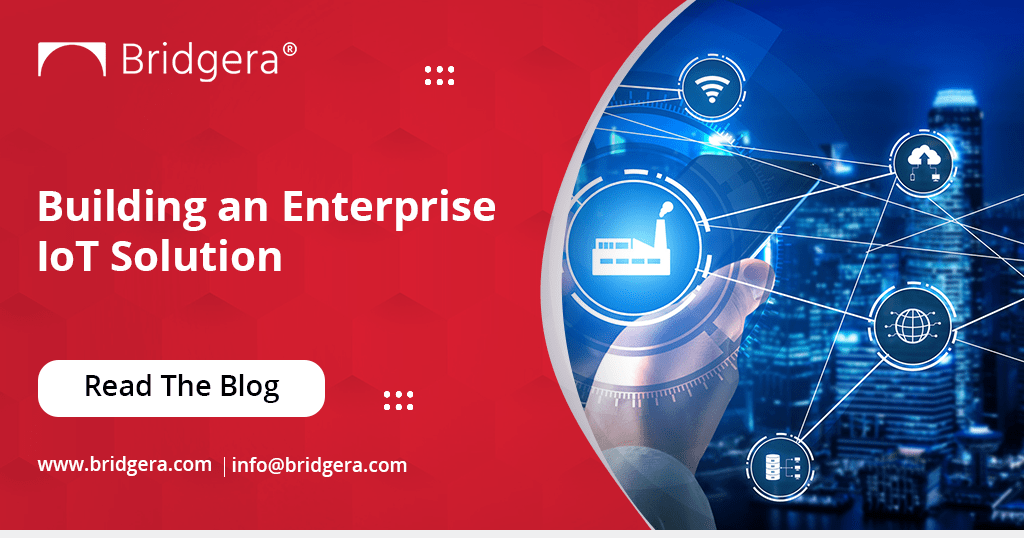Today, many enterprises around the world are opting for Enterprise IoT Solution. Thus, the Internet of Things (IoT) is a game changer for businesses preparing to compete in a smart and connected world. This blog post examines options for adopting enterprise IoT solutions without missing a beat.
We review three approaches, with their pros and cons, to help you choose the best-suited enterprise IoT platform for your needs.
Option A: Create Your Own Custom IoT Solution from Scratch
Businesses often choose this option if their deployment size is large, the data stream to the cloud is significant, their technology competency is high, or no market solution fits their requirements.
Developing an advanced IoT platform is time-consuming and complex. Leading enterprise IoT platforms have taken years to develop, leveraging cutting-edge technology. Skilled resources, spanning Big Data, cloud, front-end, mobile, and analytics, are essential but hard to find. Additionally, Artificial Intelligence (AI) is becoming increasingly important in developing IoT solutions. AI can significantly enhance machine learning, predictive analytics, and automation within the IoT ecosystem. However, integrating AI into an IoT platform requires specialized knowledge of AI algorithms, data science, and machine learning techniques.
To build a robust IoT team, you will need architects, designers, developers, QA testers, Data Modelers, DevOps engineers, AI specialists, and security experts. AI specialists will be crucial for creating intelligent systems capable of making data-driven decisions and improving performance over time.
Once built, ensure 24×7 monitoring to minimize outages and downtimes. Modern cloud technologies offer redundancy, security, and high availability, yet maintaining an integrated IoT ecosystem with embedded AI requires regular health checks to perform optimally and scale safely.
Pros and Cons
- Pros: You build what you need, own the IP, and future-proof your solution with advanced AI capabilities.
- Cons: Time-consuming, expensive, and requires significant investments (potentially 1 to 2 years). Additionally, finding skilled AI practitioners can be another challenge.
Option B: Build Using Commercial Enterprise IoT Platforms
Use commercial IoT development platforms to establish device connectivity and ingest IoT data. Examples include Azure IoT Suite and AWS IoT.
Azure IoT Suite
Microsoft’s IoT platform integrates devices into a system for transferring, storing, analyzing, and processing data. It is scalable and offers services like Azure IoT Hub for messaging, Azure Stream Analytics for data sorting, Azure Storage, Azure Cosmos DB for secure metadata storage, and Azure Web Apps.
AWS IoT Core
AWS IoT Core enables you to connect devices to AWS Services and other devices. Device gateways serve as entry points, with services ranging from edge to cloud. FreeRTOS and Greengrass provide local data collection and analysis. AWS IoT offers multi-layered security with superior AI integration & Analytics.
Pros and Cons
Pros: Up to 50% shorter implementation cycle, lower risks, cost and time savings, scalability.
Cons: Subscription costs increase with more IoT devices, and significant platform expertise is required within your team.
Option C: Engage an IoT service provider or IoT Integrator
Sign up with an experienced IoT service provider to build a solution that meets your unique needs. Service providers may offer an SDK with their platform for your team to develop the solution or customize their framework to meet your needs. Choosing a service provider with AI expertise can significantly enhance your platform’s capabilities.
Pros and Cons
Pros: Fastest time to market, cost containment, and minimized risks. Advanced AI features can be integrated without the need for specialized AI skills in-house.
Cons: Dependency on the service provider for customization and integration.
Optimizing the IoT Ecosystem: From Devices to Data
Building a robust IoT ecosystem requires a holistic approach that encompasses every stage of the device lifecycle. Efficient IoT Device Lifecycle Management ensures seamless provisioning, configuration, security, and eventual decommissioning of devices.
Reliable connectivity is the backbone of successful IoT deployment. IoT Connectivity Solutions such as cellular, Wi-Fi, LPWAN, and Bluetooth offer flexible options to suit diverse environments and communication needs.
Effective IoT Data Integration and Analytics with existing enterprise systems enable real-time monitoring, insightful analytics, and data-driven decision-making. Incorporating AI further enhances these capabilities, providing predictive maintenance, anomaly detection, and automated processes.
Bridgera: The Enterprise IoT Experts You Can Trust
At Bridgera, we simplify your IoT journey. As a full-service IoT Integrator, we offer a robust enterprise IoT platform and supporting tools to rapidly build and deploy custom IoT solutions.
We offer:
- Our own comprehensive IoT platform for secure device management and data analytics.
- IoT rapid prototyping using Digital Twins to test concepts quickly.
- Application Enablement Platform with built-in features for device management, real-time monitoring, reporting, and more (device provisioning & management, custom alarms & notification, dashboards, multi-tenancy, role-based access control).
Contact Bridgera today for a personalized consultation and discover how we can help you unlock the full potential of IoT for your enterprise.
About Bridgera: Bridgera effortlessly combines innovation and expertise to deliver cutting-edge solutions using connected intelligence. We engineer experiences that go beyond expectations, equipping our clients with the tools they need to excel in an increasingly interconnected world. Since our establishment in 2015, Bridgera, headquartered in Raleigh, NC, has specialized in crafting and managing tailored SaaS solutions for web, mobile, and IoT applications across North America.
About Author: Gayatri Sriaadhibhatla is a seasoned writer with a diverse portfolio spanning multiple industries. Her passion for technology and a keen interest in emerging IoT trends drive her writing pursuits. Always eager to expand her knowledge, she is dedicated to delivering insightful content that informs the audience.

